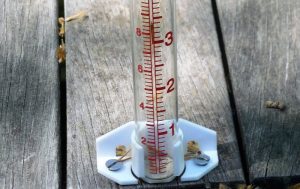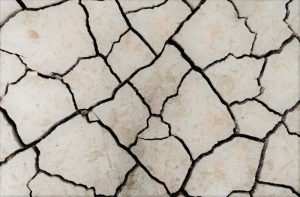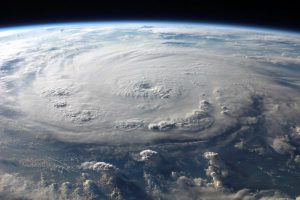Rain gauge
If we divide the word rain gauge, we find that it is made up of two parts, rain and gauge, knowing that pluvial is an adjective acquired by rain, and gauge referring to the measurement of the same, joining the two parts, we obtain as the final product the rain gauge.

Related topics
Anemometer
What is a rain gauge?
A rain gauge is an artifact used in meteorological stations to help measure and collect precipitations that fall in a certain place, noting that in meteorological terms, precipitations are all hydrometeor falling to the earth from the atmosphere, including rain, drizzle, hail, snow and sleet, not counting what can measure fog or dew, since these are only ways of condensation of these hydrometeors.
Definition
A rain gauge is a device used to calculate the rainfall that falls in a certain place during a certain amount of time.
What is a rain gauge for?
It is used to measure meteorological precipitations through rain, drizzle, hail, snow and sleet.
Origin
The first appearances of rain measurement date back to the years 500 B.C., thanks to the Greeks who began to measure it, however, 100 years later in India, the population already had a notion of rain collection, since every time there was rainy weather, they placed containers to collect rainwater, and then measure it, in these cases, the rain measurement only helped them progress in terms of crops.
For this reason, it can be said that the need to measure rainfall and its fall, arises from agricultural development, since in Palestine, religious writings were found that spoke exactly about rainfall as an essential supply for agricultural field, and therefore, the supply of indispensable food resources.
Around 1441 in Korea, scientist Jang Yeong-sil developed what would become the first rain gauge or pluviometer, made of bronze and with a standard opening, which he called Cheugugi.
However, by 1639, Benedetto Castelli, who was a Galileo’s disciple, made the first rainfall measurements in Europe, with the purpose of getting to know the water input of a rainfall event for Lake Trasimeno, this rain gauge was manual, through a cylindrical glass container that was placed in the rain, and each hour of rainfall that fell was marked at the level it reached.
In 1662, the first pluviometer with tilting basins was designed, which the inventor Christopher Wren later associated not only with the rainfall measurement, but also affirmed that the device recorded other meteorological parameters such as air temperature and wind direction.
Who invented the rain gauge?
The first rain gauge was invented by Jang Yeong-sil in the 15th century. After this, came Benedetto Castelli and Christopher Wren’s rain gauges. Finally, Gustav Johann Georg Hellmann invented the modern rain gauge in 1886.
How it works?
The device is positioned in an elevated place, in which, when the rain falls, the device is not affected by any obstacle when measuring, the container will gradually store the water and at the end, according to the measures it has marked precipitation will be determined.
Characteristics of the rain gauge
The main characteristics of the rain gauge are:
- It is a meteorological device.
- It measures rain, drizzle, hail, snow and sleet.
- It measures neither mist nor dew.
- It is cylindrical, and one of its parts is funnel-shaped.
Types
Manual rain gauge
This is the standard type and one of the most common, thus being a simple indicator of the rain fall, usually consists of a special cylindrical container with a graduated scale marked, the height of water reached inside the cylinder is equivalent to precipitation and is measured in millimeters.
Totalizing rain gauges
This type of rain gauge is the most accurate and collects the water through a funnel, which directs the liquid to a graduated container, totalizers tend to be placed at a certain height of the ground, and a person in charge records the water drop every 12 hours; the only defect of this type of rain gauge is that it is not possible to determine the time when it rained.
Siphon Pluviograph
With this type of equipment, precipitation in time can be known with exactitude. This equipment has a rotating drum that rotates at a constant speed, which consists of a graduated paper and a pen in its interior that floats vertically by water it contains; if it does not rain, the pen marks a straight horizontal line, since there are no changes in the water level of the drum.
Pluviographic double tilting bucket
After collecting the collected water through a funnel, this instrument leads it to a small double triangular bucket that can be made of metal or plastic, and which also has a hinge at a midpoint in equilibrium; this system leads the water from one bucket to another as it fills up, and each time it reaches the expected precipitation, usually 0.2 millimeters, there is a change by equilibrium to the other bucket, while the first one counts again.
Parts
- Water inlet or rain gauge mouth.
- Conductive funnel of the collected water.
- Deposit or water collector, that is usually directly graduated to facilitate the measurement of collected water.
How to make a home rain gauge
A cylindrical container or recipient is taken, the ideal is that it is transparent and plastic, since we will cut its upper part to make a kind of perpendicular nozzle, it is important that the main opening is the size of the rest of the container, this way the water reading will be true, you can place a kind of rule positioning the 0 with the base of the cylinder, if you want to use this resource is recommended that the scale or rule is metallic, since the sun can deteriorate over time.
This cylinder will be placed a base vertically, allowing us to place it in a clear area so that the fall of water does not suffer interference.
Importance
It is true that the Rain gauge importance from ancient Greece was simply agricultural, but over the years, this importance increased in such a way that not only is now used in the fields, but equally meteorologists try not only to measure water fall, but also to diagnose climate change.
How to cite this article?
Briceño V., Gabriela. (2019). Rain gauge. Recovered on 24 February, 2024, de Euston96: https://www.euston96.com/en/rain-gauge/









